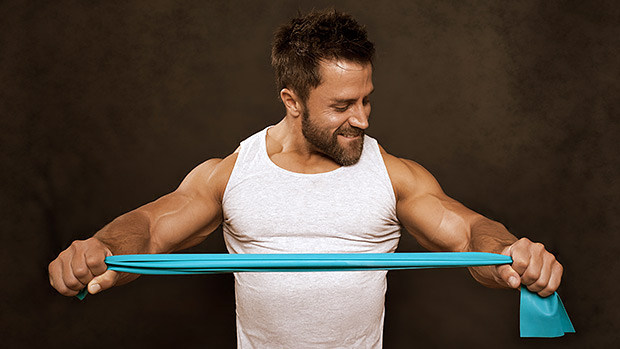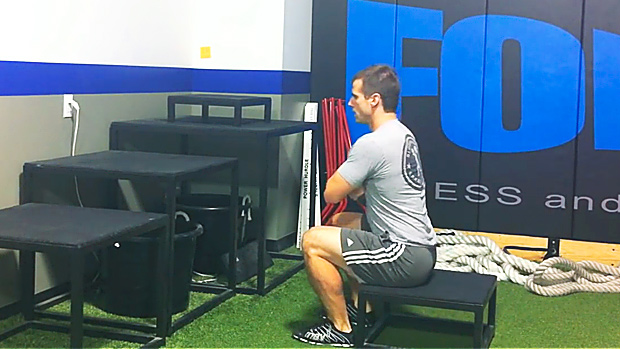Resistance band training works. And in certain cases, I prefer it over free weights or machines. But of course, free weights and machine exercises are still the gold standard for resistance training.
Here's a breakdown of the pros and cons:
The Pros
- Bands are portable. Whenever I travel for seminars, I bring resistance bands with me. If I don't have access to a full gym I can still get my pump on.
- They're versatile. You can do plenty of exercises. (These first two benefits have little, if anything, to do with being effective. But they are benefits, nonetheless.)
- Because of the strength curve (low resistance at the beginning, maximum at the end) bands do seem to give a better mind-muscle connection and peak contraction than free weights. That isn't true of all exercises, but on quite a few – like lateral and front raises, curls, and triceps pressdowns – it is.
- Bands don't cause as much muscle damage as free weights and most machines. That's because the resistance decreases when the muscle is stretched. And when the muscle is stretched the most (when you have the highest potential for muscle damage) there's essentially no resistance. No muscle damage means you can recover faster from this type of training and can thus have a higher training frequency.
- The psychological stress is much lower. Stretching a resistance band is much less intimidating than putting a bar on your back (at least for beginners).
- Bands can cause greater muscle activation. This goes along with point three. One study found that resistance training with a band led to a greater muscle activity than a similar movement done on a machine (1). Why? The constantly varying load during the rep.
- The stress on the joints seems to be lower than with free weight or machines.
As you can see, bands can certainly work. However, there are some drawbacks.

The Cons
- The progression is hard to quantify. With free weights or machines you can add any amount of resistance you want and know exactly how much you added. This makes progression easier. With bands, to increase resistance you can either add bands or use a stronger band.
Both options represent a large increase in load and that means the new resistance might be too heavy, and the preceding one, too light. You can also stretch the band more by attaching it further away from you. But this makes it very hard to quantify how much resistance you're adding.
- If you're a serious lifter, bands can be less motivating.
"Bro, my bench went from 315 to 355!"
Versus...
"Bro, I went from the red to the blue on my band curl!"It doesn't have quite the same ring to it. You shouldn't dismiss the importance of motivation in how effective a program will be. For most of us who love the iron, getting stronger and seeing more weight on the bar is one of our main motivators.
- There's much less muscle damage. I listed this as a benefit too because it allows you to train a muscle more frequently. But the downside is that it could also make the exercise a bit less effective since muscle damage is a stimulus for growth.
- Some movements just aren't a good fit. Doing squats with bands alone is unpractical and uncomfortable. You'd have to either stretch the bands fully to place them on your traps, or you'd need to put the band on the traps while in the low position of a squat. Good luck getting in a biomechanically solid squat position! Effective lower-body training with bands alone is extremely inefficient if you have any decent level of strength. At best, it can be used for very high-rep preventive work.
- The strength gained might be hard to transfer to barbell lifting. With bands you have no resistance at the beginning of the movement. With a barbell you'll have to overcome the full weight of the bar at the beginning. Resistance bands are cool. I like to use them when I want to add frequency to a lagging muscle group without impairing recovery too much.
I found that bands (either the loop bands like the ones by Rogue or EliteFts or the tubing with the handles) work better than free weights for the lateral raise, curl, and the triceps pressdown. In fact, I now do most of my lateral raises with elastic tubings and I get a much better mind-muscle connection and pump. I also like frequent band pull-aparts and leg curls.
However, I wouldn't make band-alone training the cornerstone of a program.
Reference
- Rainoldi et al., Muscle fatigue induced by two different resistances: Elastic tubing versus weight machines Journal of Electromyography and Kinesiology, 21 (2011) 954-959





